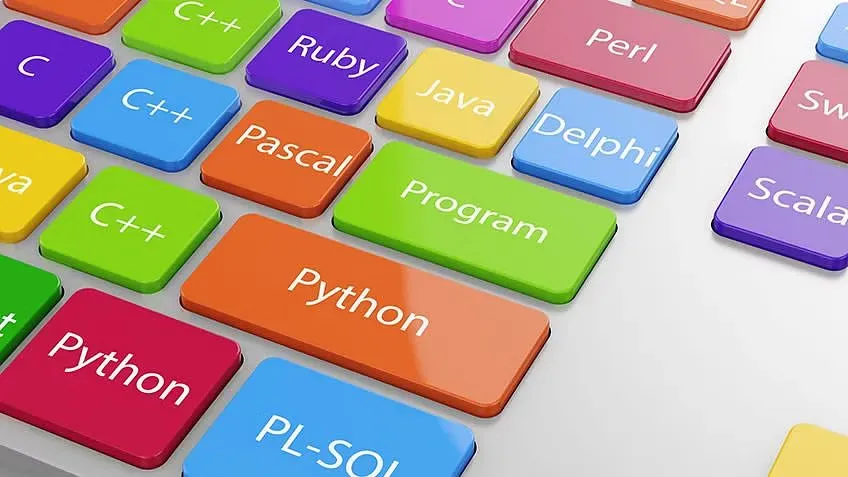Understanding the Differences: Web Design vs Development
In the digital world, two terms often surface: web design and web development. They're frequently used interchangeably, but they represent distinct aspects of the website creation process.
Web design is about the look and feel of a website. It's the creative process of turning ideas into a visual interface. On the other hand, web development is the technical process of bringing that design to life, making it functional and interactive.
Understanding the differences between these two fields is crucial. Whether you're a business owner seeking to establish an online presence, an aspiring web professional, or just curious about the industry, this knowledge is invaluable.
In this article, we'll dive into the specifics of web design vs web development. We'll explore their unique roles, the tools they use, and how they collaborate to create a cohesive web experience.
Join us as we unravel the intricacies of these two vital components of the digital landscape. Let's start our journey into understanding the differences:
web design vs development.
Photo By: Tech Radar
The Essence of Web Design
Web design is the art of crafting the visual elements of a website. This process involves shaping the structure, colors, fonts, and images to create an appealing interface. The primary goal is to captivate users and deliver an excellent first impression.
A designer focuses on aesthetics and usability to ensure the site is visually stunning and easy to navigate. They consider user experience, making choices that enhance interactions between the user and the website. A well-designed website seamlessly guides visitors from one section to another, answering their needs.
Responsive design is key, ensuring that websites look great on various devices. With the shift towards mobile browsing, adaptability is no longer optional. Ensuring user engagement across devices is crucial for web design success.
The power of design can elevate brand perception and drive customer engagement. By harnessing intuitive layouts and captivating visuals,
web designers play a vital role in creating a memorable digital presence.
Key Elements of Web Design
Several foundational components guide the web design process. Understanding these elements is essential for crafting a visually compelling website that is also functional.
Layout: The arrangement of text and graphics on a page.- Color Scheme: A palette that reflects the brand's identity and influences mood.
- Typography: The style and appearance of text, affecting readability and aesthetics.
- Imagery: Use of photos, illustrations, and icons that reinforce the site's message.
Mastering these elements helps ensure a cohesive and engaging user experience.
Tools and Skills for Web Designers
Web designers rely on various tools to translate ideas into captivating digital interfaces. Each tool has a specific role in the design process, aiding different aspects of the creative workflow.
Designers use
graphic design software like Adobe Photoshop and Sketch to create layouts and edit visuals. Additionally, wireframe tools like Figma or Balsamiq help in planning and structuring web content. Prototyping tools such as InVision or Adobe XD enable designers to create interactive designs and convey ideas effectively.
Skills like understanding
color theory and typography are crucial. Additionally, strong problem-solving capabilities and an eye for detail enhance the design process.
Web Design for Local Businesses
When it comes to local businesses, web design takes on a unique importance. A well-designed website can act as a powerful marketing tool, drawing in local customers. By focusing on local SEO and user engagement, businesses can establish a distinct online presence.
Design choices should reflect the local brand's identity and resonate with the community. Incorporating elements like maps, local landmarks, and community-focused content helps build a connection with users.
Furthermore, understanding the target audience ensures the design appeals to local demographics. This approach can lead to higher user engagement and increased foot traffic, boosting business growth.
Photo By: Simpli Learn
The Technical World of Web Development
Web development focuses on bringing a website's design to life through coding and programming. This process encompasses everything from the basic structure to intricate functionalities that power user interactions. Developers work behind the scenes to ensure a website runs smoothly.
This field requires a deep understanding of various
programming languages like HTML, CSS, and JavaScript. These languages form the backbone of a site's structure and style. A web developer takes the visual aspect and transforms it into a functional site.
Another crucial aspect is website performance. Developers optimize code to ensure fast load times and seamless user experiences. They also play a critical role in maintaining website security by implementing protective measures against potential threats.
Moreover, understanding
server management and database configurations is essential. These elements ensure data integrity and consistent site performance. Effective web development practices are crucial for delivering a polished and reliable digital product.
Frontend vs Backend: The Subcategories of Web Development
Web development divides into two primary areas: frontend and backend development, with frontend development utilizing various front end software to create the user interface, ensuring that visitors have an engaging interaction with the website.
- Frontend Development: Also known as client-side development, focuses on what users see and interact with directly.
- Backend Development: Server-side development that handles data storage, management, and website logic.
Both areas must work in harmony to deliver a seamless experience. A well-structured frontend complements a robust backend.
Tools and Skills for Web Developers
Web developers rely on a variety of tools to build and maintain websites. These tools aid in coding, testing, and deploying web applications efficiently.
Developers often use
code editors like Visual Studio Code or Sublime Text for writing and managing code. For version control, Git is essential to track changes and collaborate on projects. Tools like Chrome DevTools assist in debugging and optimizing website performance.
Proficiency in programming languages such as JavaScript, along with frameworks like React or Angular, is crucial. Additionally, understanding database management systems like MySQL is beneficial. Problem-solving skills and strong analytical thinking enhance the development process, ensuring well-functioning web solutions.
UI vs UX: Bridging Design and Development
UI (User Interface) and UX (User Experience) are critical aspects bridging web design and development. While UI concerns the visual elements, UX focuses on user interaction and satisfaction.
Effective UI designs create intuitive and aesthetically pleasing interfaces. UX aims to enhance user engagement by optimizing the overall experience. Both UI and UX designers collaborate closely with developers to ensure functional and delightful user journeys.
Custom Web Design and Development: Tailoring to Your Needs
Custom web design and development offer solutions tailored to specific business needs. A personalized approach ensures your website aligns perfectly with your brand. This uniqueness can provide a competitive edge.
Every business has different goals and audiences.
Custom designs address these differences by focusing on unique functionality and branding elements. Such targeted efforts help in creating memorable user experiences.
A well-crafted
custom website considers your objectives, audience, and industry. This approach fosters stronger connections with users, which can drive engagement and business growth. Custom solutions are essential for those seeking a strong online presence.
Collaboration: When Design Meets Development
As we conclude our exploration of the differences between web design and development, it's clear that both disciplines are vital in creating an engaging and functional online presence. At Quantifi Media, we understand the intricate balance between aesthetics and functionality. Our team of skilled designers and developers collaborates closely to deliver tailored web solutions that elevate your brand and drive user engagement.
If you're looking to enhance your online presence and want a custom website that reflects your unique identity, look no further.
Contact Quantifi Media today to discuss how we can help you create a seamless blend of compelling design and robust development that will set your business apart in the digital landscape. Let’s transform your vision into reality!
Share this blog!






